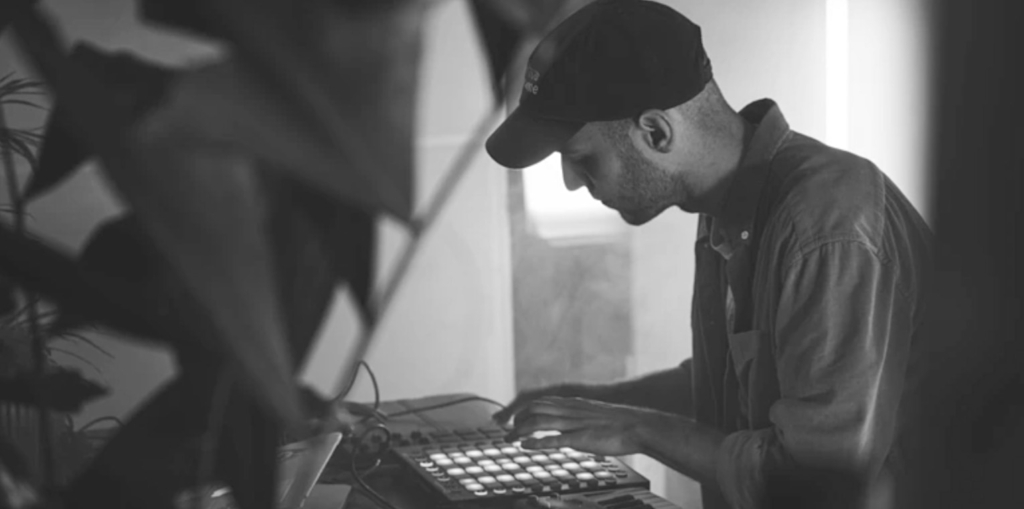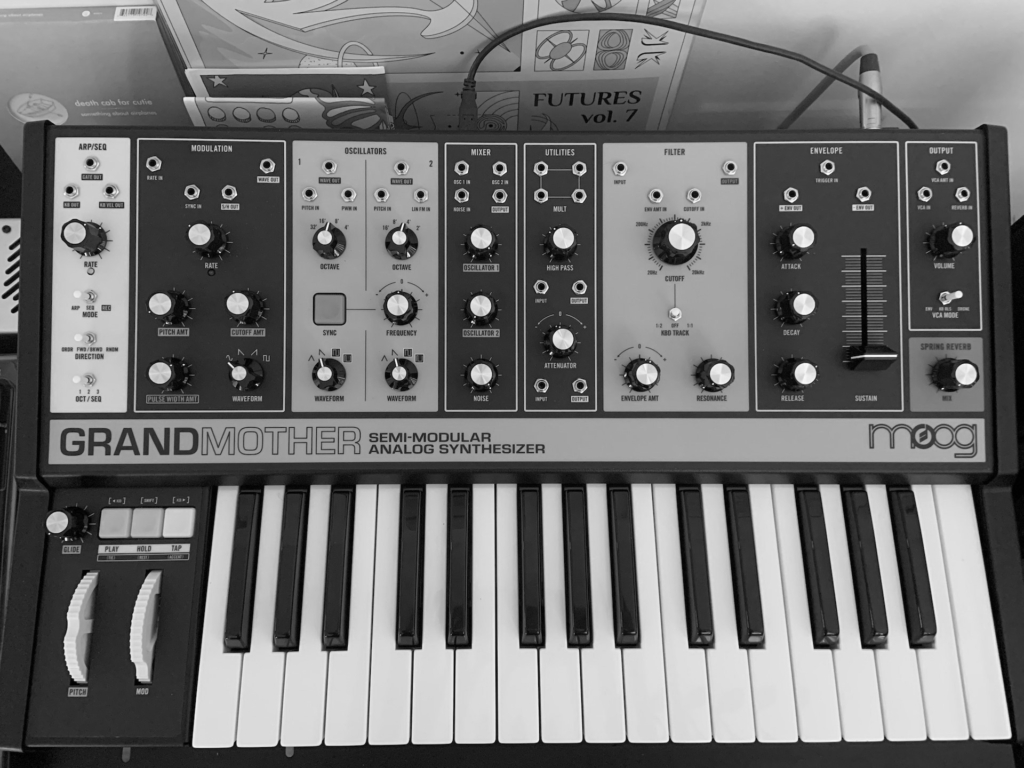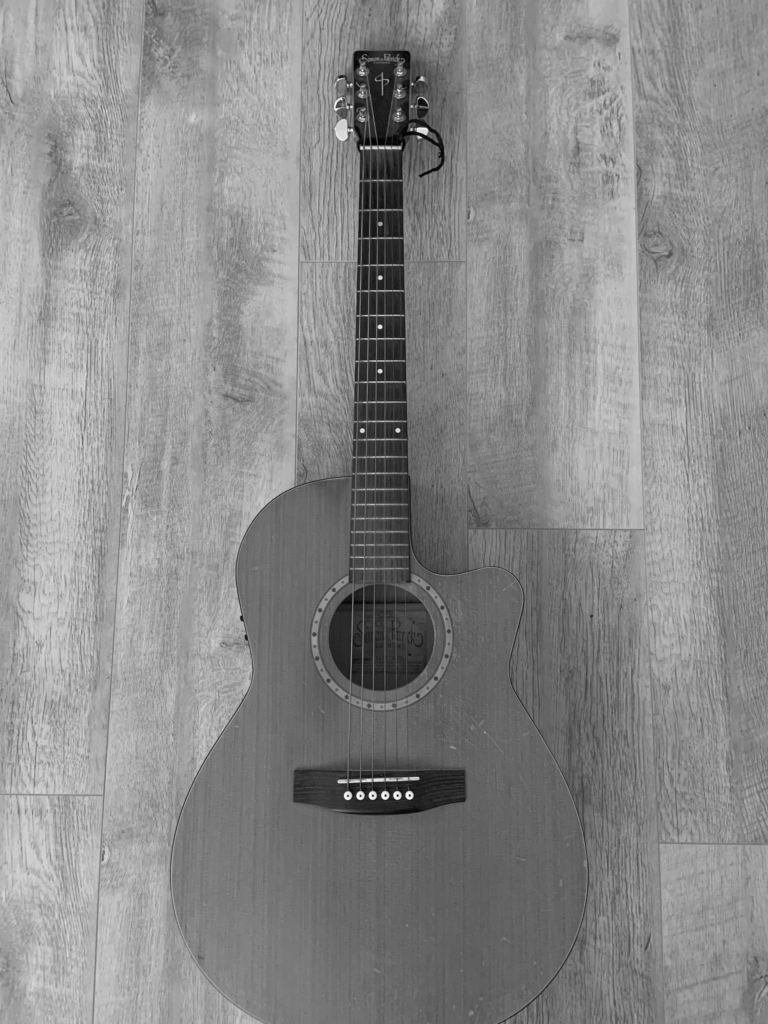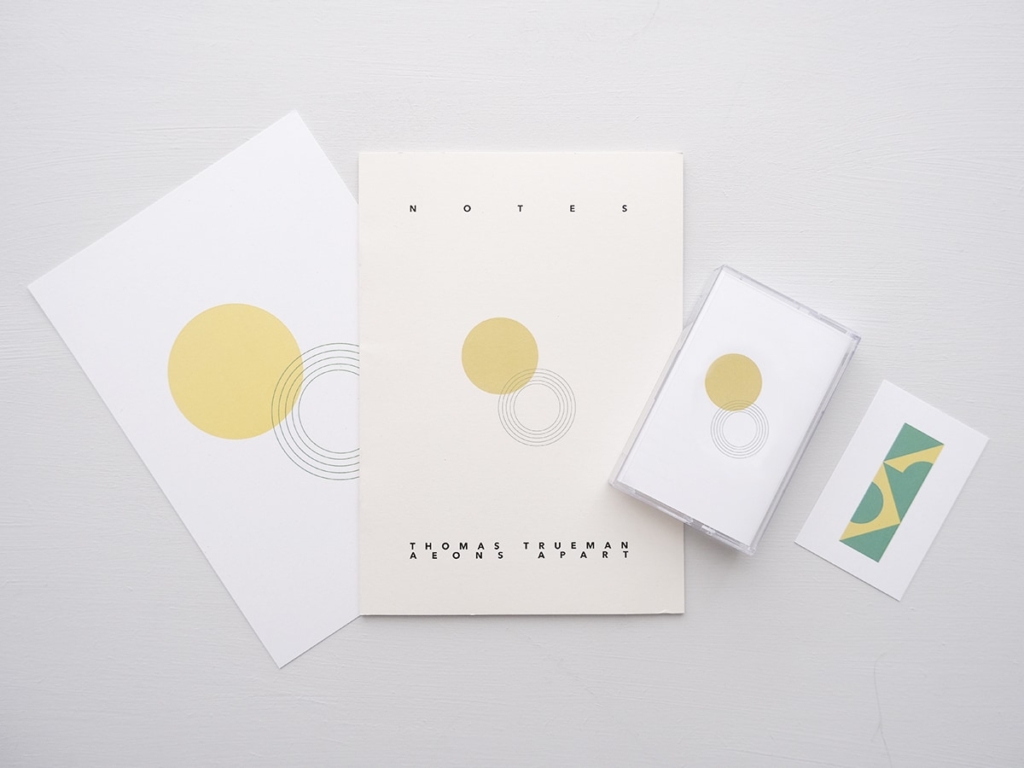In Conversation:
Thomas Trueman

With Aeons Apart (out now on SoundGhost), UK-based composer and producer Thomas Trueman offers a striking exploration of emotional distance, memory, and sonic fragmentation. The album blends tactile acoustic elements with degraded textures, creating a sound world that feels simultaneously intimate and remote – anchored in reality, yet blurred by time. In this interview, Trueman speaks candidly about his creative process, the role of texture and limitation in shaping his work, and the subtle tensions between polished production and personal expression. It’s a revealing conversation that sheds light not only on the making of Aeons Apart, but on the quiet, complex spaces where ambient music finds its emotional resonance.
To celebrate the release, Thomas is including a free sample pack with the album. Grab Aeons Apart on Bandcamp and you’ll be able to claim the exclusive pack!
The title Aeons Apart evokes a sense of vast time and distance. What drew you to that name, and how does it connect to the sonic or emotional world of the album?
The name came from a feeling I couldn’t shake during the writing process of being both connected to and far removed from something essential. Whether that was people, places, or even older versions of myself, it felt like I was writing across a kind of emotional time-lapse. I felt the name also reflected the sonics of the album, with a lot of fragmented audio, degraded loops and washed-out textures.
Do you write with a full picture in mind, or do you allow each layer to suggest the next?
Almost always the latter. I might start with a feeling or a rough texture, but the full picture reveals itself through layering, accidents, and intuitive decisions. Each element leads to the next, and the track tells me what it wants to be, rather than the other way around.
When you set out to write music, are you more often led by harmony, texture, or some emotional cue you’re trying to articulate?
I’d say texture and emotion arrive first. A dusty chord or a degraded sample might carry more emotional weight than a melody on its own. I recently watched a video by Venus Theory about this very topic, where he also commented that texture and timbre can drastically change a chord.
You’ve mentioned working with hardware, sampling, and found sounds before – how did your sound palette for this album take shape?
The sound palette was really about contrast and cohesion, balancing the tactile warmth of acoustic guitar with more fragmented, digital textures. I’d often record a guitar phrase, then resample it, pitch it down, reverse it, and suddenly it would feel like a memory from someone else’s life. That process helped me shape a world where each track felt part of the same dreamlike space – anchored in reality but distorted by nostalgia.
I do use hardware synths, such as my Moog Grandmother, however I am always committing to audio to then manipulate it further with processing.

There’s a recurring presence of fragmented voices and micro-chopped guitar in Aeons Apart. What tools or practices do you utilise for this sound?
A lot of that comes from slicing audio in Ableton’s Simpler. It lets me stretch, retrigger, and recontextualise tiny fragments, just milliseconds of sound, which creates these stuttering, broken textures that feel emotionally unsettled. That process really tied into the themes of the album: memory, distance, disintegration.
I’ve found that resampling my own material is where the magic happens. The initial guitar ideas are often quite plain, but once I chop, pitch, or reverse them, something more evocative emerges, something unfamiliar that still carries a trace of the original performance. I know I’m not going to play anything on the guitar that hasn’t been heard before, but through fragmentation, I can create sounds that feel personal and new. It’s about embracing limitation and letting the process reveal the interesting parts.
How does the limitation of working off a chopped sample – or a single note stretched across a sampler – change your compositional mindset?
It forces you to become resourceful. You stop looking outward for new sounds and start digging into what’s already there. A single note can offer dozens of variations, through pitch, rhythm and texture that you’d never explore if you had unlimited choices.
The album began with a desire to reconnect with your roots, but also wrestles with modern production. Did those two forces ever feel at odds with each other during the process?
Absolutely and I think that tension is something I’ll always be navigating. My day-to-day work often involves creating music to very specific briefs for sample packs or sync projects, where there’s a clear target or aesthetic in mind. That can make it difficult to switch gears and figure out what I actually want to say when there’s no brief, no expectation to meet.
With Aeons Apart, part of the challenge was unlearning that mindset and allowing myself to create without trying to fit into a predefined box. I had to keep asking: What feels honest? What feels like me? There were definitely moments where the pull toward polish and structure clashed with the more instinctive, emotional roots of the project. But I think the album lives in that in-between space where the raw and the refined are in constant conversation.
You’ve mentioned previously that your best ideas came from combining traditional guitar playing with audio processing. What’s your process for knowing when to stop manipulating a sound and let it speak as it is?
If the processing starts to overshadow the intent, I pull it back. Some takes need to stay raw because they carry the emotional fingerprint. Others benefit from being disguised or transformed. I try to listen for when the sound still feels honest.
You describe the acoustic guitar as the “lead vocalist” of the album. What does that metaphor reveal about your emotional relationship to the instrument and did it play a part in your composition focus?
The acoustic guitar has always felt like the most direct line to my inner musical voice. It was the first instrument I really connected with, and the only one I ever truly learned to speak through so everything, in some way, traces back to it. On Aeons Apart, it wasn’t just a layer or texture, it was the emotional and compositional anchor.
Normally, I write music and then bring in the guitar to complement the arrangement. But with this album, I flipped that approach. I let the guitar lead. Each piece began with a phrase or progression that felt like it was saying something on its own, almost like a vocal line. From there, I built the surrounding world of sampling, processing and layering but the guitar always remained the heart of it. Calling it the “lead vocalist” reflects how central it was to the storytelling, even without lyrics.

You’ve used chopped vocals and found phrases in subtle ways – how do you approach the line between intelligibility and abstraction when working with the human voice?
I love that in-between space where a vocal is recognisably human, but you can’t quite make out what it’s saying. It allows listeners to project their own meaning onto it. I’m drawn to that ambiguity, it’s where emotion lives, I think. Tourist’s album ‘U’, always stands as the perfect balance of using only a few vocal phrases to let the listener interpret the story.
The vocal element in ‘Hold You’ seems to humanize the ambient palette compared to other tracks and fits beautifully. What made you want to bring the clear vocal into this composition and how did that come about?
That track always felt like the emotional centrepiece of the album, and I knew it needed something more direct to ground it. I’d been working on a sample pack around the same time and came across that vocal sung by the incredible HEIGHTS and it just clicked immediately.
There was a warmth and intimacy in her voice that balanced the more abstract textures around it. It gave the piece a sense of presence, almost like someone stepping out of the fog. I loved how it still left plenty of space but added that human connection the track needed. If you haven’t heard HEIGHTS’ own work, you definitely should, she’s an amazing artist in her own right.
Your use of a ‘Sample Diary’ is both practical and poetic. How do you decide when a sound is worth archiving, even if it doesn’t serve an immediate purpose?
If it makes me feel something, it goes in. Even if I don’t know what it’s for, I trust that it’ll mean something later. It’s like collecting memories, you don’t always know why they matter until you revisit them.
Can you walk us through a piece that changed the most from its initial version to the final one? What did that evolution teach you?
Over The Hill was originally a more epic, beat-driven, almost post-rock idea. Over time, I stripped away everything but the ambient layers and reprocessed the guitar until it felt like it was dissolving. It taught me that subtraction is often more powerful than addition.
Were there any non-musical influences that helped shape Aeons Apart – literature, landscapes, dreams, personal experiences?
While writing the album, I was in the middle of buying my first home with my partner which was a huge period of change and transition. It naturally became a time of reflection: looking back at where I’d come from, trying to make sense of the present, and thinking about what’s ahead. That sense of in-between-ness, of not quite arriving, but no longer where you were, really seeped into the emotional core of the album.
It wasn’t about a specific place or story, but more about the feeling of shifting ground. The music became a way to process that change, to hold onto moments that were already starting to slip into memory.
Does accidental discovery ever take part in your composition? If so, what often leads you to that discovery?
Almost everything good I make starts as an accident. A misfired note, a wrong stretch setting, a random preset—those moments lead to sounds I couldn’t have planned. It’s why I love working with limitations. They force you into creative corners.
What role does texture play in your writing?
Texture is the emotional glue. A chord might carry meaning, but the way it’s played, the grain, the crackle or the timbre, determines how that meaning hits. I think of texture as the emotional tone of voice of a track.
‘Old Endings’ closes the record on a hopeful note. Is hope something you consciously seek when finishing a body of work – or something that finds you naturally at the end?
I didn’t set out to end on a hopeful note, but the track just emerged that way, like a breath after something heavy. I think there’s always some hope hidden in endings, even quiet, unresolved ones.
If you were to offer any advice to anyone who wants to make music in this style, what would be your main piece of advice?
Follow what feels personal, not what sounds cool. I’ve been guilty of chasing trends before and it always ends up being inauthentic. Don’t be afraid of quiet, or imperfection, or subtlety.
In Aeons Apart, Thomas doesn’t just sculpt sound – he sculpts distance, memory, and the quiet tension between what’s remembered and what’s already fading. It’s an album that resists easy resolution, where every loop and fragment holds the weight of something once whole. As our conversation reveals, Trueman’s process is less about control and more about listening to accidents, to intuition, to the emotional residue left behind by each sound. It’s a reminder that some of the most resonant music isn’t always made in pursuit of perfection, but in the spaces where things fall apart just enough to feel real.
Aeons Apart is available via SoundGhost and now includes a free sample pack.


